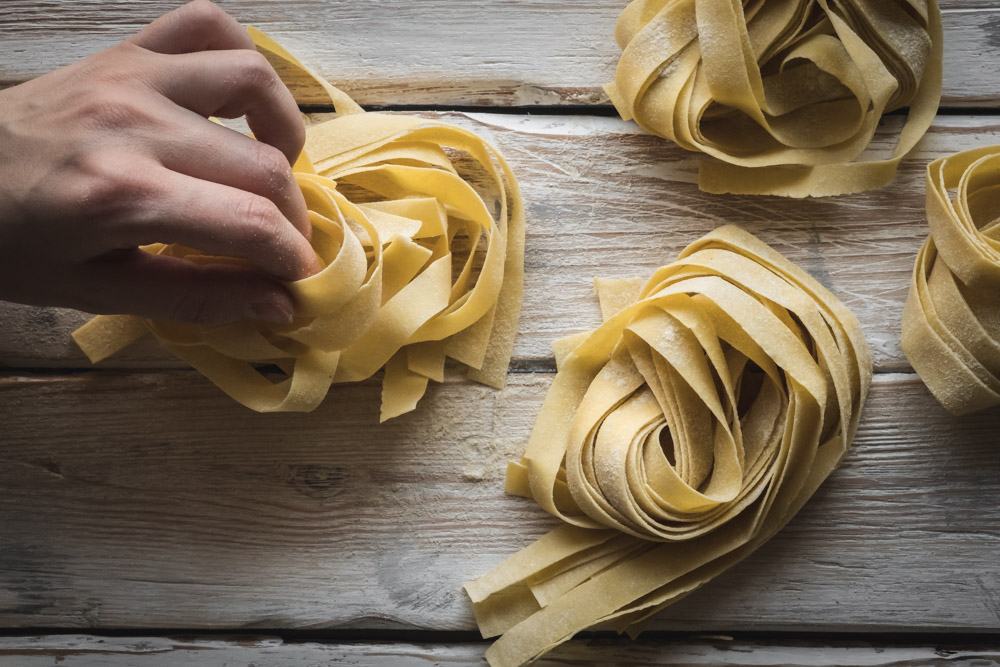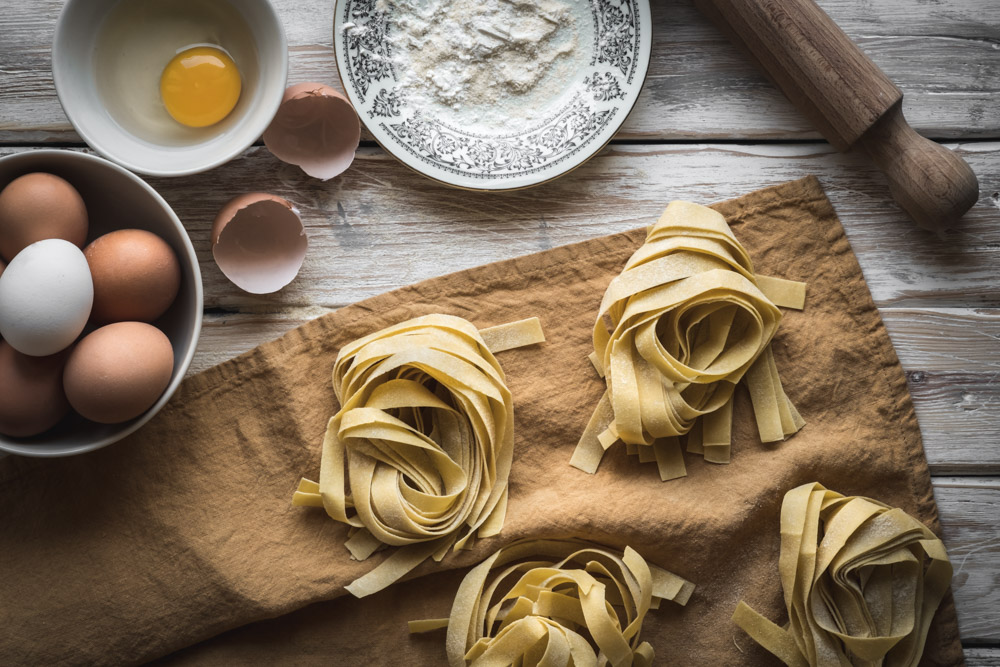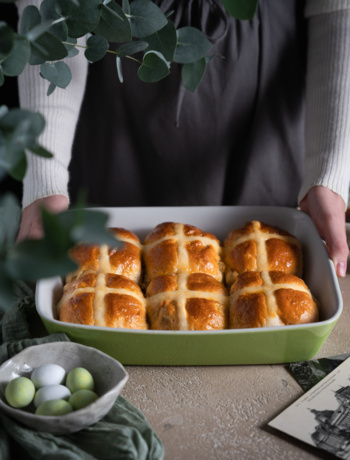 This week I would like to share with you another recipe typical of the Italian tradition. And I am pretty sure that you will love it regardless of where you are from, cause everyone loves pasta! This recipe for homemade fresh pasta dough is super easy, and I can assure you that eating pasta made by yourself is going to be really satisfying and rewarding.
This week I would like to share with you another recipe typical of the Italian tradition. And I am pretty sure that you will love it regardless of where you are from, cause everyone loves pasta! This recipe for homemade fresh pasta dough is super easy, and I can assure you that eating pasta made by yourself is going to be really satisfying and rewarding.
To roll out the dough you can use a traditional pasta machine, or the Kenwood/KitchenAid pasta attachment, or even simply use a rolling pin, either way, is it going to be delicious! Plus there are so many pasta shapes you can make and so many sauces that each time you can make a completely different dish for an amazing experience every single time. Buon Appetito!
-ITALIAN VERSION-
PASTA FRESCA ALL’UOVO FATTA IN CASA
Per rimanere nel solco della tradizione italiana ecco la mia semplicissima ricetta per fare la pasta fresca all’uovo. Potete stendere la sfoglia a mano, oppure con una tradizionale macchina per pasta a manovella, o ancora con la sfogliatrice del vostro Kenwood o KitchenAid, indipendentemente dallo strumento utilizzato alla fine otterrete una buonissima pasta fresca fatta in casa. E una volta condita con il vostro sugo preferito, c’è solo l’imbarazzo della scelta, vi assicuro che la soddisfazione di mangiare una buona pasta fatta con le proprie mani è impagabile. Buon appetito!
Ingredienti per 2 persone
2 uova
160 g farina bianca tipo “00”
1 cucchiaino di sale fino
Procedimento
-
Disponete la farina a fontana e inserite le uova al centro. Aggiungete il sale e un cucchiaio di olio extra vergine di oliva (opzionale). Mescolate delicatamente con una forchetta, e cominciate ad incorporare la farina.
-
Questo passaggio iniziale può essere anche fatto in una ciotola, oppure in un robot da cucina.
-
Quando il composto non è più liquido incominciate a lavorare l’impasto con le mani. È necessario lavorarla per almeno una decina di minuti. Se siete abituati a lavorare il pane noterete che il tipo di impasto è diverso e, in particolare, più duro, per questo motivo non si può lavorarlo in planetaria. Per cui sarà difficile avvolgerla su se stessa, e i movimenti saranno più piccoli. Io personalmente avvolgo un piccolo lembo e poi schiaccio con il palmo della mano e man mano ruoto leggermente la palla di impasto.
-
Una volta ottenuto un impasto elastico e omogeneo, avvolgetelo nella pellicola e lasciatelo riposare per almeno 30 minuti, per far sì che il glutine si “rilassi”.
-
Una volta riposato, tagliate l’impasto a metà con un tarocco e avvolgete la metà che non utilizzate subito nella pellicola.
-
Assocuratevi che la vostra macchina per tirare la pasta sia ben fissata al tavolo, se avete un Kitcheaid consiglio l’utilizzo dell’apposita sfogliatrice.
-
Infarinate il pezzo di pasta con della farina di semola e cercate di formare una forma rettangolare con il mattarello, poi inseritelo nella macchina per la pasta con i rulli alla larghezza massima.
-
Una volta passata, ripiegarla a libro in tre parti, facendole combaciare il più possibile e tagliando irregolarità ed eccedenze.
-
Poi riducete di una tacca in modo da stingere i rulli e passate nuovamente la sfoglia. Continuare fino ad arrivare all’ultima o penultima tacca a seconda dello spessore desiderato. Per questa ricetta io mi sono fermata alla penultima tacca e inoltre per ogni tacca passo la pasta due volte in modo che diventi più omogenea.
-
Stendete quindi le strisce su un piano di lavoro infarinato e lasciate asciugare per circa 10-15 minuti per lato.
-
A questo punto potete realizzare il formato di pasta che preferite, i ho scelto di fare le taglietelle e vi spiego come.
-
Prendere una sfoglia e ripiegare un lembo fino a due terzi circa, poiarrotolare formando un rotolino molto piatto.
-
Con un coltello affilato Tagliare il rotolo di pasta a fettine di circa 5-7 mm di spessore.
-
Dare aria alle tagliatelle agitandole un po’ e sistemarle su un vassoio con un po’ di semola rimacinata facendo attenzione che non si attacchino, e lasciar essiccare per circa 2 ore.
HOMEMADE FRESH EGG PASTA
Ingredients
- 2 eggs
- 160 g flour type"00"
- 1 tsp salt
Instructions
1
Place the flour on the kitchen table – or in a bowl – and make a well in the center. Then pour the eggs in the well. You can also do this first part into a food processor.
2
Add the salt and a spoonful of extra virgin olive oil (optional).
3
Stir gently with a fork and begin to incorporate the flour.
4
Keep incorporating the flour into the eggs until all the flour has been absorbed.
5
Once everything is combined start kneading the dough on your kitchen counter for at least 10 minutes. You can’t do this in a stand mixer, as the dough is tougher than bread dough, so you have to do it by hand.
6
After ten minutes, make a ball and wrap it in a cling film, let it rest for at least 30 minutes to allow the gluten to “relax”.
7
After resting, remove the dough from the fridge and cut it into 2 equal pieces. Set aside and cover with a cling film to stop it from drying out.
8
First, make sure that your pasta maker machine is clamped firmly to the table. If you have a KitchenAid stand mixer I strongly recommend the pasta roller attachment as it makes the process easier.
9
Dust your work surface with some semolina flour.
10
Take your piece of pasta dough and press it out flat with the palms of your hands. Roll it through the widest (fully open rollers) setting of your pasta machine.
11
Lightly dust both sides of the pasta sheet with flour and fold it in half. Feed the pasta sheet through the smooth rollers several times, until it is long and regular in shape.
12
Set the adjustment knob of the machine to number 1, and pass the pasta sheet through once more.
13
Repeat the process and so on until you reach the desired thickness. For this ravioli pasta, I stopped at number 6 (being number 7 the last one).
14
Repeat with the other piece of pasta. Then let the pasta sheets dry on a surface dusted with semolina flour for about 10-15 minutes per side.
15
You can now make your favorite pasta shape, I made tagliatelle this time.
16
To cut the pasta sheets into tagliatelle, take one end of one pasta sheet and start to roll it to form a flat roll.
17
Using a sharp knife, slice it into 5-7 mm thick noodles.
18
Place them onto a baking tray dusted with semolina flour, and let them desiccate for a couple of hours before using them.
Notes
If you want to store the pasta you can keep it into the freezer for up to 3 months in individual freezer bags.
Si può congelare e conservare in freezer fino a 3 mesi, in appositi sacchetti per congelo.
HOMEMADE FRESH EGG PASTA
Ingredients
- 2 eggs
- 160 g flour type"00"
- 1 tsp salt
Instructions
Place the flour on the kitchen table – or in a bowl – and make a well in the center. Then pour the eggs in the well. You can also do this first part into a food processor.
Add the salt and a spoonful of extra virgin olive oil (optional).
Stir gently with a fork and begin to incorporate the flour.
Keep incorporating the flour into the eggs until all the flour has been absorbed.
Once everything is combined start kneading the dough on your kitchen counter for at least 10 minutes. You can’t do this in a stand mixer, as the dough is tougher than bread dough, so you have to do it by hand.
After ten minutes, make a ball and wrap it in a cling film, let it rest for at least 30 minutes to allow the gluten to “relax”.
After resting, remove the dough from the fridge and cut it into 2 equal pieces. Set aside and cover with a cling film to stop it from drying out.
First, make sure that your pasta maker machine is clamped firmly to the table. If you have a KitchenAid stand mixer I strongly recommend the pasta roller attachment as it makes the process easier.
Dust your work surface with some semolina flour.
Take your piece of pasta dough and press it out flat with the palms of your hands. Roll it through the widest (fully open rollers) setting of your pasta machine.
Lightly dust both sides of the pasta sheet with flour and fold it in half. Feed the pasta sheet through the smooth rollers several times, until it is long and regular in shape.
Set the adjustment knob of the machine to number 1, and pass the pasta sheet through once more.
Repeat the process and so on until you reach the desired thickness. For this ravioli pasta, I stopped at number 6 (being number 7 the last one).
Repeat with the other piece of pasta. Then let the pasta sheets dry on a surface dusted with semolina flour for about 10-15 minutes per side.
You can now make your favorite pasta shape, I made tagliatelle this time.
To cut the pasta sheets into tagliatelle, take one end of one pasta sheet and start to roll it to form a flat roll.
Using a sharp knife, slice it into 5-7 mm thick noodles.
Place them onto a baking tray dusted with semolina flour, and let them desiccate for a couple of hours before using them.
Notes
If you want to store the pasta you can keep it into the freezer for up to 3 months in individual freezer bags. Si può congelare e conservare in freezer fino a 3 mesi, in appositi sacchetti per congelo.






No Comments